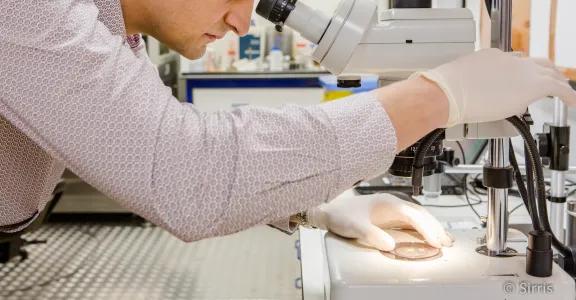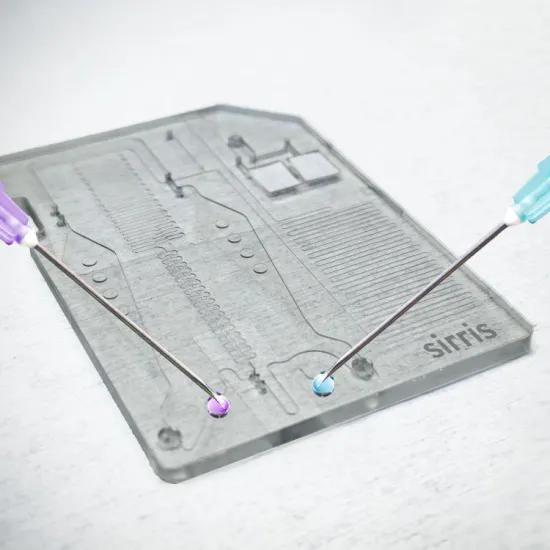Growth in the microdomain is driven by IoT applications and other connected and smart products, as has been demonstrated by Micro-Lab products throughout 2018.
Sensor printing on flexible substrates
Sirris was asked to produce force sensors printed on flexible, stretchable substrates. The challenge was to print conductive tracks that do not break when the substrate is stretched. Sirris set up a printing protocol based on those specifications and fully compatible with the scalable industrialisation plans.
Sensor printing on fluidic chips
For the healthcare industry, Sirris researched the option of printing sensors to detect analytes in polymer microfluidic chips previously produced by micro-injection. Printing the sensors results in low-cost production, in line with the future operation system (for single use).
Conductor printing on heat sinks
Direct printing of electronic circuitry on a heat sink significantly increases the yield and miniaturisation of a high-power LED light source. This strategy does not require layers as do conventional electronic with printed circuit boards (PCBs). The layers are now superfluous. This trend is also visible in the polymer products sector (plastronics). This approach consists of the integration of electronics in the product’s polymer structure. This integration does not require a PCB, which is cumbersome and bulky.
Adding structured micro-layers on non-conventional substrates
Our micro-printing technology, for example aerosol jet printing, is sufficiently accurate to print micron-level details and apply micro-structures on metallic, polymer, silicon, ceramic and other substrates. These can even be printed in 3D without requiring pre-processing or complex and costly masking techniques.


